This is the “recap” of the A-Section Blues from my last post. It’s a condensed version, not a literal restatement and, unlike the traditional A-B-A tonal scheme, starts elsewhere in the scheme of things before returning to the “expected” tonal centers (I hesitate using the term “key” since it will only confuse people who are too literal in the old definitions of things). I use “centers” in the plural, also, because the violin is in one center (basically B) while the piano is in another (basically A-flat) – thank you, Darius Milhaud, for inspiring a little bit of poly-centricity...
I’m not keen on a lot of literal or mechanical repetition or, more accurately, restatement – finding our way around a 19th Century sonata form relies on our ability to remember themes and different details, to whatever extent we’re capable: this explains why the exposition is repeated, to reinforce the principal material. In something that evolves more organically, it relies on shapes and patterns rather than themes and modulations to assist the listener's memory. So the problem here was coming up with recognizable fragments of the opening blues segment with recognizable signposts along the way, condensed yet keeping the idea of some kind of linear melodic flow in the violin part while the pianist chugs along with the chords: cadences are reached but are never really “closed,” always pushing ahead with new elements and degrees of tension. But there are linear shapes we are used to – either from the traditional blues style or the patterns we’d heard earlier – that signal “here’s a phrase-cadence” and so on.
This excerpt begins with the end of the B-Section’s “rock interruption,” a pattern which sneaks in at the very end, once more, where the violinist, figuratively speaking, gives up with a kind of Neapolitan “oh well” tag and one last “uh huh” chord in the piano with added tones, all still based on the same hexachords. In the A-Sections, fore and aft, all the violin’s material comes from the inversion of 6-Z47 which is a blues scale pattern; all the chords in the piano are either 6-Z47 (prime or inversion) or its complement, 6-Z25 (prime or inversion).
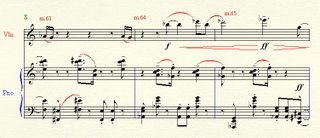
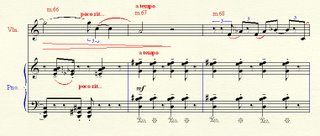
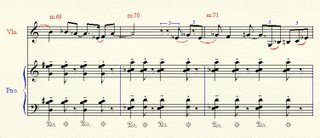
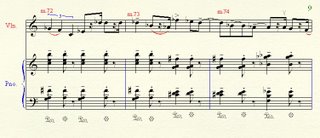
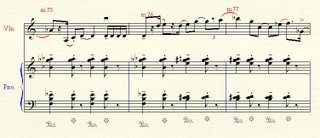
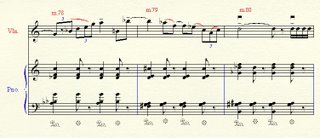

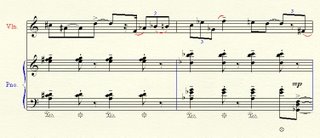
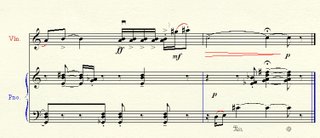 There are still a few minor details to work out and some notational things that Finale NotePad isn’t designed to do that a pencil on paper can still do better (or more clearly), but that’s basically it.
There are still a few minor details to work out and some notational things that Finale NotePad isn’t designed to do that a pencil on paper can still do better (or more clearly), but that’s basically it.




No comments:
Post a Comment